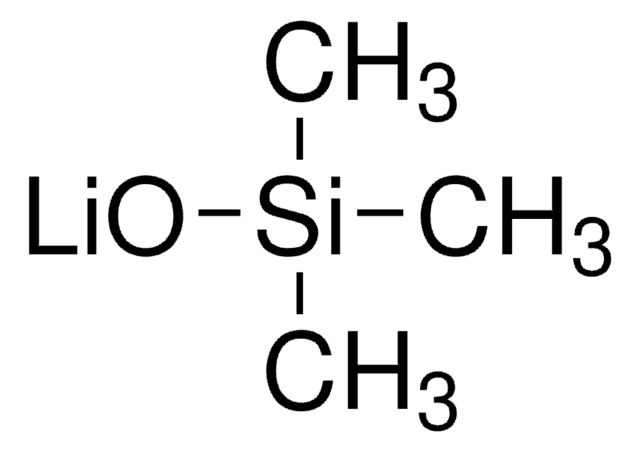추천 제품
일반 설명
Copper(I) oxide is a weak inorganic base that can be used to activate halides for nucleophilic substitution reaction. It is also used in decarboxylation and cyclo condensation reactions.
애플리케이션
Copper(I) oxide can be used:
- As a precursor to prepare nanoparticles, nanocrystals, and quantum dots for various applications.
- To catalyze the N-arylation of azoles under aqueous conditions using phase-transfer catalyst.
- To prepare reduced graphene oxide-based nano copper composites applicable as a sensor for the detection of dopamine.
- As a copper precursor to prepare Cu2O-TiO2 nanoparticle-based composite materials with aluminosilicate geopolymers applicable in the removal of organic pollutants from water.
신호어
Danger
유해 및 위험 성명서
Hazard Classifications
Acute Tox. 4 Inhalation - Acute Tox. 4 Oral - Aquatic Acute 1 - Aquatic Chronic 1 - Eye Dam. 1
Storage Class Code
11 - Combustible Solids
WGK
WGK 3
Flash Point (°F)
Not applicable
Flash Point (°C)
Not applicable
개인 보호 장비
dust mask type N95 (US), Eyeshields, Faceshields, Gloves
가장 최신 버전 중 하나를 선택하세요:
시험 성적서(COA)
Lot/Batch Number
이미 열람한 고객
Synthesis and properties of novel photoactive composites of P25 titanium dioxide and copper (I) oxide with inorganic polymers
Falah M and MacKenzie KJD
Ceramics International, 41(10), 13702-13708 (2015)
A ligand-free copper (I) oxide catalyzed strategy for the N-arylation of azoles in water
Yong FF, et al.
Tetrahedron Letters, 52(11), 1161-1164 (2011)
Synthesis of copper and copper (I) oxide nanoparticles by thermal decomposition of a new precursor
Salavati-Niasari M and Davar F
Materials Letters, 63(3-4), 441-443 (2009)
Preparation of copper (I) oxide nanohexagon decorated reduced graphene oxide nanocomposite and its application in electrochemical sensing of dopamine
Sivasubramanian R and Biji P
Materials Science and Engineering, B, 210(11), 10-18 (2016)
Investigation of copper (I) oxide quantum dots by near-edge X-ray absorption fine structure spectroscopy
Nachimuthu P, et al.
Chemistry of Materials, 15(20), 3939-3946 (2003)
문서
The diversity of applications and nanostructured materials accessible using ultrasonic spray methods are highlighted in this article.
Ultrasonic spray pyrolysis produces scalable nanomaterials like metal oxides and quantum dots for diverse applications.
자사의 과학자팀은 생명 과학, 재료 과학, 화학 합성, 크로마토그래피, 분석 및 기타 많은 영역을 포함한 모든 과학 분야에 경험이 있습니다..
고객지원팀으로 연락바랍니다.









